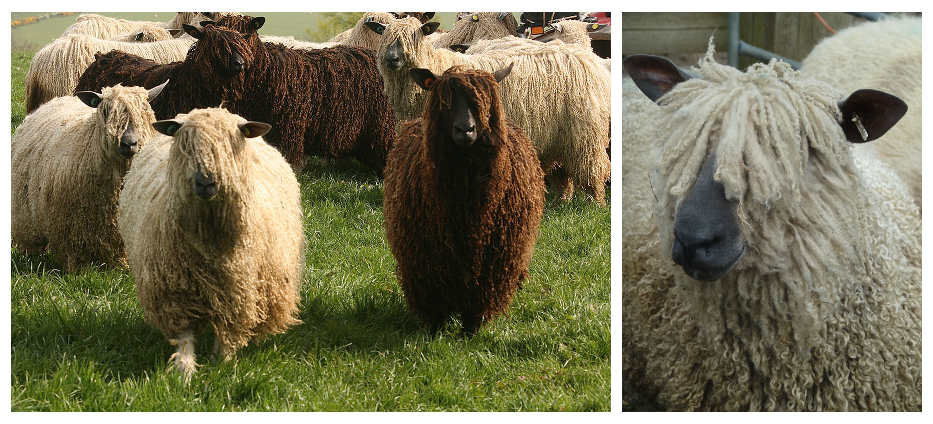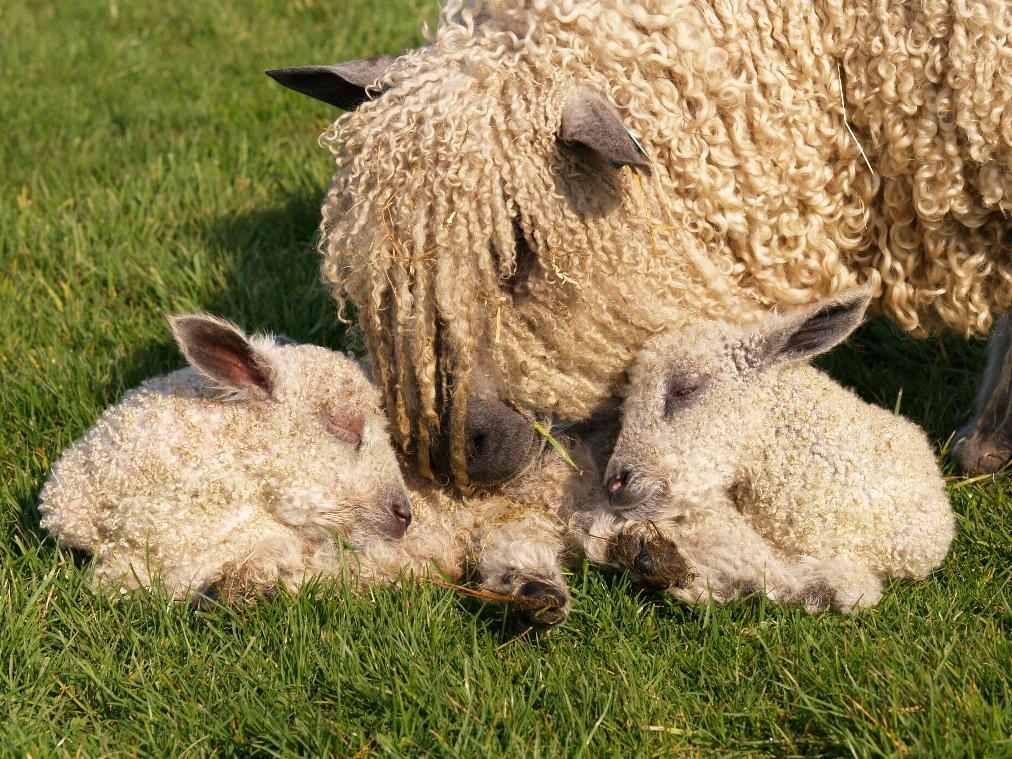Many elements should be taken into account when assessing the quality of a yarn and the most important of all is of course the fleece it is made from. Fleece – or wool – varies from one breed of sheep to another, carrying specific structural elements that impact the softness, strength and drape of the yarn. Knowing about the fleece produced by different breeds of sheep is a good way to understand what to look for when buying wool for a new project. Depending on the effect you want to achieve you might favour certain wool over some others.
In this third episode of Know Your Sheep we’re going to look at Wensleydale sheep, an ancient British breed that first appeared in the Yorkshire Dales in 1838. 
1. The history
The legend behind the origin of the breed tells us the story of a ram named Blue Cap which was born from the crossing between a Dishley Leicester and a – now-extinct – long-wool Yorkshire breed. Our sources describe Blue Clap as a ‘wild spirited’ and ‘outstanding animal’, that weighed over 32 stone, and bore the blue face and lustrous wool characteristic of the breed. Born in 1939 Blue Cap, was widely used by local farmers to improve their livestock by crossbreeding. By giving lambs consistently like himself, Blue Cap became the founding sire of the Wensleydale breed. The Wensleydale sheep quickly established itself as an excellent crossing breed providing with hardy, prolific animals and heavy milking ewes. Beside these enviable qualities, Wensleydales also produce good quantity of lean meat, and a wool particularly lustrous and silky in appearance. 
The breed was officially named in 1876 leading to the foundation of the Wensleydale Long Wool Sheep Association in 1920, which at its creation, included 197 members and 3059 registered ewes. Despite its early popularity, British farming communities soon lost interest in Wensleydales. In 1967 the number of Wensleydales declined to only 18 registered flocks and 291 ewes. After the formation of the Rare Breeds Survival Trust in 1973 the breed was put on a critical list. Although it is still considered as a rare breed, thanks to the work of dedicated breeders, Wensleydales are once again established all over the UK, and have extended into Europe and North America.

2. The wool
Wensleydales classify as a ‘luster long wool’ breed i.e a long wool breed specifically selected for the sheen and brilliance of their fleece. As we explained in our post on Leicester sheep, long wool are naturally strong, hard-wearing and lustrous, however Wensleydales fleece presents a thinner fibre diameter and a longer staple length, which makes it softer and even more lustrous than most long wools.
It takes on average 15 months for a lamb to grow its full fleece. Once shorn it will never grow back as long again, thus most photos of Wensleydales with wool down to the ground are those of lambs that have kept their first fleece. As Wensleydales do not produce any kemp, the majority of their raw fleece can be used for spinning, resulting in 5kg of usable wool per animal.
3. The Sheep
Wensleydales are easily recognisable due to their extremely long fleece divided in well defined curly locks, and their deep blue head and ears. Their head is broad and partly covered in fine wool. Both rams and ewes are polled, and can be either black or white. They are also distinctively tall and strongly built; ewes weigh on average 90 kg while the ram can go up to 135 kg, making the Wensleydale sheep one of the heaviest British breeds.
4. yarns
As explained previously, Wensleydale wool has the great advantage of being shiny, fairly soft and hard wearing. Yarns made from long wool are usually worsted spun, a spinning method than enhanced the natural properties of the Wensleydale fleece by adding some extra strength, softness and sheen to the finish product. Ultimately Wensleydale wool is a great fibre to knit with, if you want to prioritise the strength, drape and shine of your knitted garments. Made from 100% Wensleydale fleece, the Gems range by West Yorkshire Spinners is a beautiful DK yarn that distinguish itself by its incredible sheen and vibrant colour palette. Being a little bit hairy, it almost looks like it’s been mixed with a small percentage of mohair. Although it is softer than most long wool, keep in mind that it will definitely feel a little coarser in comparison to a yarn made from merino.
Baa Ram Ewe – Dovestone DK is another lovely blend made from 25% of Wensleydale, 25% of Masham and 50% of Bluefaced Leicester. With such a mix of long wool fleeces, this yarn would be ideal to create hard-wearing garments with a beautiful drape. Both of those yarns are made from 100% British wool.
Maybe you’ve already used some Wensleydale wool for one of your knitted or crochet project? If so do not hesitate to share it with us on our Ravelry group page!
Until Next Time… Happy Knitting!
Fournier, Nola and Fournier, Jane, In Sheep’s Clothing: A Handspinner’s Guide to Wool, Loveland: Interweave Press LLC, 1995. Print
Breed Standards, North American Wensleydale Sheep Association. Web. http://www.wensleydalesheep.org/breed-standards2.html
English Wensleydale History. North American Wensleydale Sheep Association, Web. http://www.wensleydalesheep.org/uk-history.html
Fleeces, West End Wensleydales. Web. http://www.wensleydalesheep.co.uk/wensleydale-sheep
Wensleydale, Rare Breed Survival Trust. Web. http://www.rbst.org.uk/Rare-and-Native-Breeds/Sheep/Wensleydale
Wovember Words: On Wensleydales, Wovember. Web. https://wovember.wordpress.com/2014/11/05/wovember-words-on-wensleydales/




 No products in the basket.
No products in the basket.